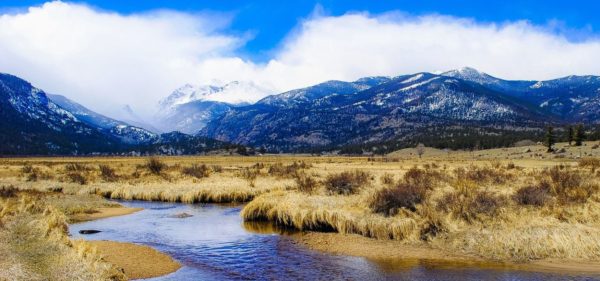 This year we’ve seen one of the most active wildfire seasons in the state’s history. Wildfires have a significant impact on the state’s natural resources; recently in this blog, for instance, we’ve looked at how wildfire impacts wildlife species. Now that recovery from the wildfires has begun, the state is assessing the impacts on another significant natural resource, our watersheds.
This year we’ve seen one of the most active wildfire seasons in the state’s history. Wildfires have a significant impact on the state’s natural resources; recently in this blog, for instance, we’ve looked at how wildfire impacts wildlife species. Now that recovery from the wildfires has begun, the state is assessing the impacts on another significant natural resource, our watersheds.
Wildfire can affect water resources in many ways. Chemicals and debris can pollute the water, causing it to become hazardous to drink. Runoff patterns can change, causing floods and mudslides. The structural integrity of water wells and measurement structures can be compromised, and dams could become unsafe. And the chemical composition of water used for irrigation could be affected as well. Property owners, local governments, and those who own water rights near burn areas can find helpful information in a new memo from the Colorado Division of Water Resources. This memo also includes information on potential funding sources. Additional useful resources from the State of Colorado include:
- Addressing the Impacts of Wildfire on Water Resources (Colorado State University Extension)
- Colorado Post-Fire Playbook: Guidance for Counties, Tribes, Municipalities, and Water Providers (Colorado Department of Public Health and Environment)
- Protecting Critical Watersheds in Colorado From Wildfire (Front Range Watershed Protection Data Refinement Work Group)
The State has also published several case studies on how past wildfires have affected watersheds. These include the 1996 Buffalo Creek Fire and the 2012 High Park Fire. In addition, the Colorado School of Mines conducted a study that looked at how wildfire would affect drinking water in Clear Creek watersheds near Golden.
Visit the websites for the Colorado Division of Water Resources, the Colorado Water Conservation Board, and the Colorado Department of Public Health and Environment for additional resources and funding information.
- How to Spot the Differences Between Eagles and Hawks - August 16, 2021
- How Transportation Projects Help Tell the Story of Colorado’s Past - August 9, 2021
- Time Machine Tuesday: The Night the Castlewood Canyon Dam Gave Way - August 3, 2021
